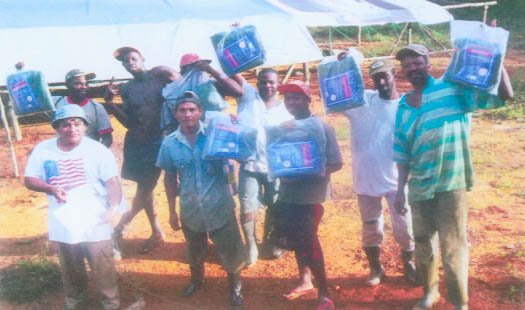The Ministry of Health says malaria treatment and sensitisation are priority this year after rising gold prices have created a population explosion in mining districts, where the disease is prevalent.
Although the ministry forecast a 15% to 18% reduction in the number of malaria cases by 2012 year end as compared with the previous year, it has also observed that over the past four years the number of persons engaged in the gold mining sector in the affected malarious endemic areas – especially regions 1, 7, 8 and 9 – has significantly increased from 20,000 to about 130,000.
At a news conference, Minister of Health Dr Bheri Ramsaran said that along with non-communicable diseases, the fight against malaria will be a priority of his ministry this year. He noted that the target population has now significantly increased and includes women, who are now going into the mining areas, where the disease is most prevalent, “with their males”.
The ministry promises that in another two weeks, distribution of over 50,000 Long lasting Insecticidal Nets (LLINs)—nets treated in the factory with an insecticide incorporated into the net fabric which makes the insecticide last at least 20 washes in standard laboratory testing or five years—will commence countrywide but focusing primarily on areas in regions 1, 7, 8 and 9, mostly populated by miners and those linked to mining.

In addition, the need for persons to complete treatments was stressed by health personnel, who warned that cutting short the dosage can prove dangerous since not only can there be resistant strains developed but that it is also costly, since it is the drug Coartem (artemether and lumefantrine) that is given to patients.
Ramsaran informed that logistics challenges also pose problems as miners are not concentrated in one area but are spread out across Guyana’s vast interiors.
“It gives us more challenges, miners are going more places and their women are going with them… it is a whole new population now,” he said.
Programme Director of Malaria Services Indal Rambajan, with the assistance of members of the Vector Control Unit told the news conference yesterday that Guyana’s mining areas are being crowded. “This is a direct result of the unprecedented increase in world market gold price from US$114 (per ounce) in 2005 to US$1,800 presently. In 2013 it is expected that the price of gold on the world market will reach as high as US$3,000 driven in the main by China and India,” a report presented by Rambajan stated. “Consequently, it is expected that the number of persons engaged in the sector will continue to increase significantly,” he added.
Rambajan echoed most of what the minister said, while adding that even on the coastlands, in areas such as Mahaicony and Mahaica, there are reported cases of malaria.
It is under the ministry’s mantra of “bringing more services to more people in more places in a timely manner” that not only will there be the net distribution but also mass blood and fever surveys every 21 days in all camps and villages.
Further, there is also a target of completing the Radical Cure of all confirmed malaria cases based on Guyana’s Standard National Anti Malaria Treatment Guide-lines, which is adopted and approved by the World Health Organisation and the Pan American Health Organisation.
In addition, malaria sensitisation outreaches will be conducted across the country to poor and vulnerable groups.
The ministry is asking persons in areas to begin simple preventative measures, such as wearing long-sleeved clothing and using insecticides as an aid in getting the disease under control.
Persons receiving LLINs are asked to use them since not only do they kill and repel mosquitoes but other insects as well, while posing no health risk to humans.





